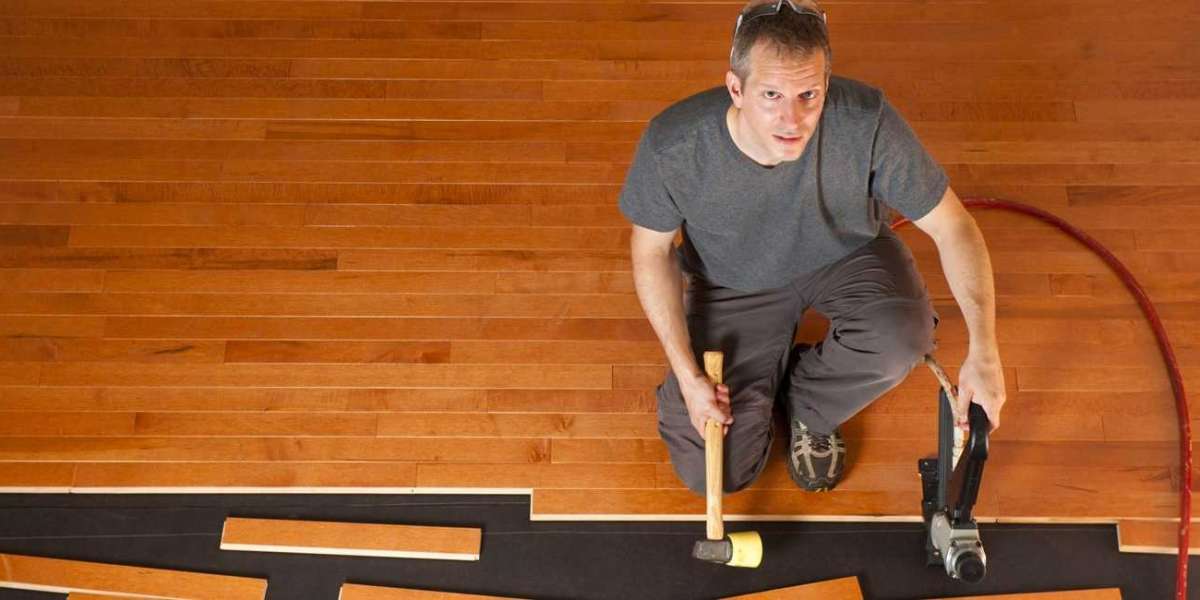Installing a wood floor requires precision and the right materials to ensure durability and longevity. One of the most critical elements of a successful installation is the proper use of wood floor adhesive. This bonding agent holds your wood planks securely in place, ensuring that your flooring lasts for years without issues like shifting, buckling, or moisture damage. But with so many options available, how do you choose the right wood floor adhesive for your project? In this guide, we’ll explore the different types of adhesives, their importance, and what factors to consider before making your final decision.
Why Is Wood Floor Adhesive So Important?
When installing wood floors, the choice of adhesive directly impacts the overall performance and durability of your flooring. Unlike mechanical fasteners like nails or staples, adhesives provide a continuous bond between the wood and the subfloor, reducing gaps, movement, and potential wear over time. Using a high-quality wood flooring adhesive ensures that your planks remain secure, even in high-traffic areas, and can prevent issues like warping or separating.
The Types of Wood Floor Adhesives You Should Know
There is no one-size-fits-all solution when it comes to wood floor adhesive. Different projects call for different types of adhesives based on factors such as the type of wood flooring, subfloor material, moisture levels, and the installation method. Below are some of the most commonly used hardwood floor adhesive
- Urethane-Based Adhesives
Urethane-based adhesives are among the most popular choices for securing wood flooring. They are moisture-resistant and provide a strong, flexible bond that allows for some movement in the wood, preventing cracking or buckling. These adhesives are ideal for both solid hardwood and engineered wood floors. If you're installing wood in areas with fluctuating temperatures or humidity, such as basements or kitchens, this type of wood floor adhesive is highly recommended.
- Water-Based Adhesives
Water-based adhesives are eco-friendly, easy to clean, and quick to dry. They are often preferred for environmentally conscious installations as they emit fewer volatile organic compounds (VOCs). However, water-based hardwood floor adhesive is less resistant to moisture, making it more suitable for dry areas like living rooms or bedrooms. They also work best for engineered wood flooring rather than solid hardwood.
- Acrylic-Based Adhesives
Acrylic-based adhesives are another versatile option. They work well with a variety of wood types and offer quick drying times. This type of wood flooring adhesive is particularly useful for engineered wood and laminate flooring due to its strong bonding capabilities. Additionally, these adhesives are resistant to high temperatures, making them a great option for floors that will be exposed to sunlight or radiant heat systems.
- Solvent-Based Adhesives
Solvent-based adhesives offer strong bonding power and can be used in areas prone to moisture. However, they tend to emit more fumes and VOCs compared to water-based or urethane-based adhesives, so adequate ventilation is necessary during installation. This type of wood floor adhesive is ideal for commercial spaces or areas with heavy foot traffic where the flooring needs to endure considerable wear and tear.
Key Factors to Consider When Choosing Wood Floor Adhesive
- Type of Wood Flooring
One of the first things to consider when selecting an adhesive is the type of wood flooring you're installing. Solid hardwood floors require a stronger, moisture-resistant adhesive due to the natural expansion and contraction of the wood. On the other hand, engineered wood floors, which are more dimensionally stable, can work with less robust adhesives like acrylic-based products.
- Subfloor Type
The material of your subfloor is another important factor when choosing the right hardwood floor adhesive. If you're installing flooring over a concrete subfloor, you'll need an adhesive that offers excellent moisture resistance, such as urethane-based or solvent-based adhesives. For plywood subfloors, water-based adhesives can be a viable option as long as moisture isn't a concern.
- Moisture Levels
Moisture is the enemy of wood flooring, and your adhesive needs to account for it. If you're installing flooring in a room that’s prone to high humidity or moisture, such as a bathroom, kitchen, or basement, opt for a moisture-resistant wood floor adhesive. Urethane-based adhesives are usually the best option in such scenarios because of their flexibility and water-resistant properties.
- Installation Method
There are two main methods of installing wood floors with adhesives: full-spread and perimeter-bonding. Full-spread installations involve applying adhesive across the entire surface of the subfloor, ensuring maximum coverage and bonding strength. This method is ideal for high-traffic areas or rooms where the floor will be exposed to heavy loads. Perimeter-bonding, on the other hand, involves applying adhesive only to the edges of the planks. This method is faster but may not provide the same level of stability as full-spread adhesive.
- Environmental Impact
Many homeowners today are concerned with the environmental impact of their building materials. Choosing a low-VOC wood flooring adhesive can help reduce your carbon footprint while also ensuring a healthier indoor environment. Water-based adhesives typically emit fewer harmful fumes than solvent-based ones, making them an eco-friendly choice for your home.
Common Installation Mistakes to Avoid
Even with the best wood floor adhesive, improper installation can result in a host of problems down the road. Here are a few common mistakes to avoid:
- Not Preparing the Subfloor Properly
Before applying any adhesive, it's essential to clean and prepare the subfloor. Dust, debris, and moisture can all prevent the adhesive from bonding correctly, leading to weak spots in the floor.
- Using the Wrong Adhesive
Not all adhesives are created equal, and using the wrong one for your wood type or subfloor material can result in premature wear or even failure of the flooring. Make sure to choose the right adhesive for your specific project.
- Applying Too Much or Too Little Adhesive
Applying too much adhesive can cause the glue to ooze out from between the planks, creating a messy installation. On the other hand, using too little adhesive may not provide a strong enough bond, leading to loose planks over time.
- Not Allowing Adequate Drying Time
Different adhesives have different drying times, and failing to wait the necessary amount of time before walking on or placing furniture on the floor can ruin your installation.
Conclusion
Choosing the right wood floor adhesive is a crucial step in ensuring the longevity and beauty of your wood flooring. With various options available—each offering different benefits—it’s important to consider factors such as the type of wood flooring, subfloor material, and environmental conditions before making your decision. By taking the time to select the right adhesive and avoiding common installation mistakes, you can enjoy your hardwood or engineered wood floors for many years to come.








